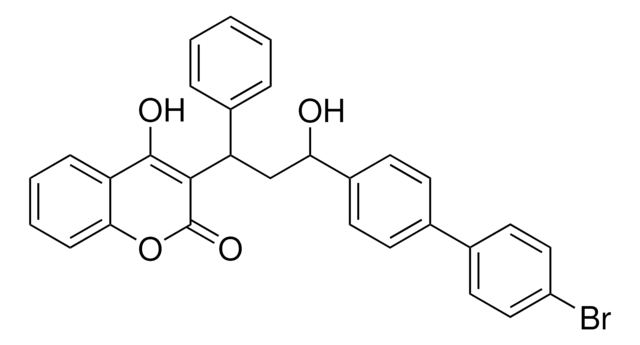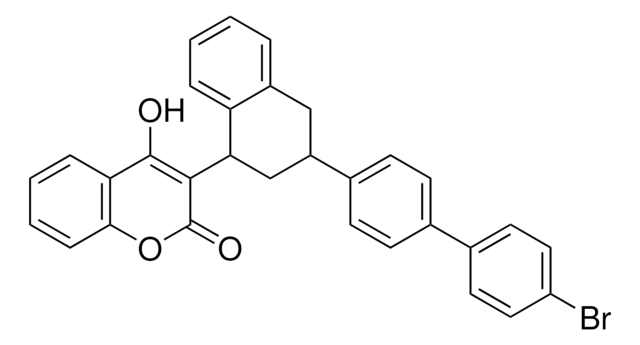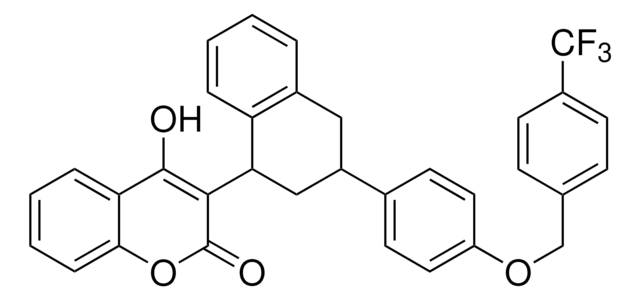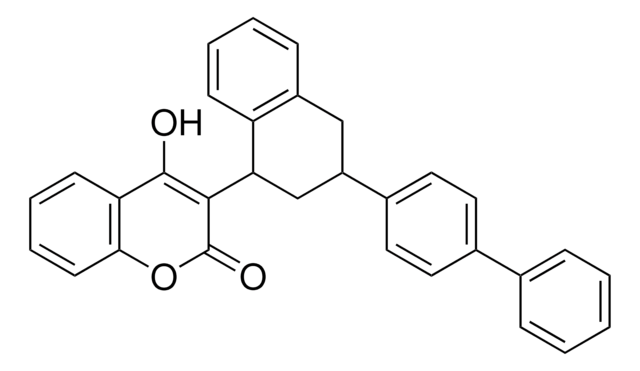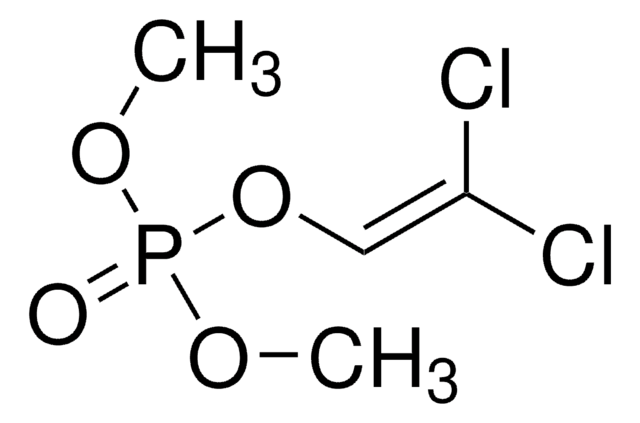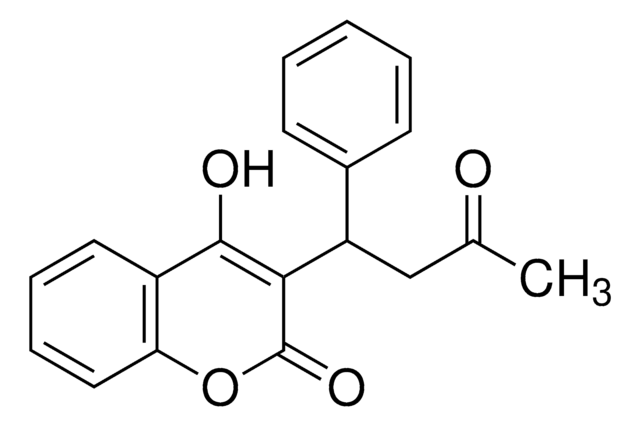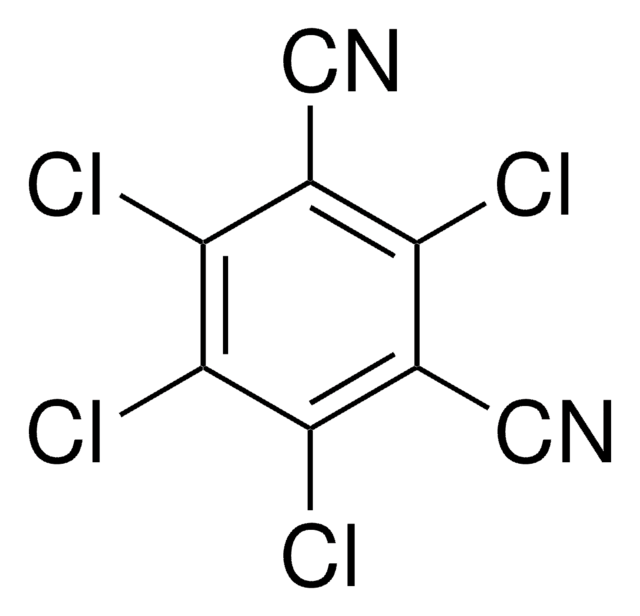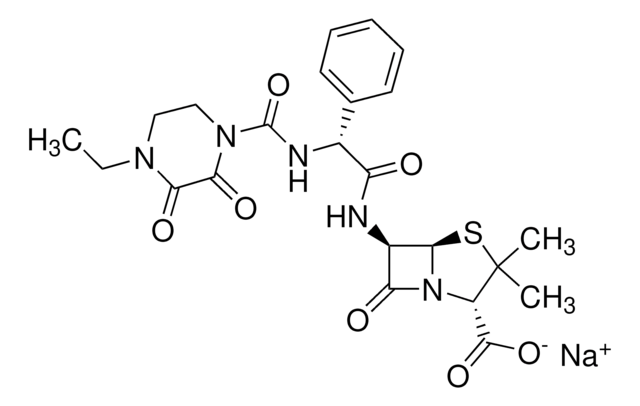About This Item
Recommended Products
grade
analytical standard
Quality Level
product line
PESTANAL®
shelf life
limited shelf life, expiry date on the label
technique(s)
HPLC: suitable
gas chromatography (GC): suitable
application(s)
agriculture
environmental
format
neat
SMILES string
OC1=C(C2CCCc3ccccc23)C(=O)Oc4ccccc14
InChI
1S/C19H16O3/c20-18-15-9-3-4-11-16(15)22-19(21)17(18)14-10-5-7-12-6-1-2-8-13(12)14/h1-4,6,8-9,11,14,20H,5,7,10H2
InChI key
ULSLJYXHZDTLQK-UHFFFAOYSA-N
Looking for similar products? Visit Product Comparison Guide
General description
Application
- Sludge samples by solid-liquid extraction (SLE) and liquid chromatography coupled to tandem mass spectrometry (LC-MS/MS) equipped with electrospray ionization (ESI), and selected reaction monitoring (SRM) detection.
- Wastewater samples by miniaturized liquid-liquid extraction (LLE), solid-phase extraction (SPE) and LC-ESI-MS/MS with SRM detection.
- Vertebrate wildlife and domestic animals by gel permeation chromatography (GPC) clean-up followed by ultra-high performance liquid chromatography (UHPLC) coupled to ESI-MS/MS with multiple reaction monitoring (MRM) detection.
- Blood samples by LLE and ESI-LC-MS/MS with MRM detection.
Legal Information
signalword
Danger
Hazard Classifications
Acute Tox. 2 Inhalation - Acute Tox. 2 Oral - Acute Tox. 3 Dermal - Aquatic Chronic 1 - Repr. 1B - STOT RE 1
Storage Class
6.1A - Combustible acute toxic Cat. 1 and 2 / very toxic hazardous materials
wgk_germany
WGK 3
flash_point_f
>212.0 °F
flash_point_c
> 100 °C
ppe
dust mask type N95 (US), Eyeshields, Faceshields, Gloves, type P2 (EN 143) respirator cartridges
Choose from one of the most recent versions:
Certificates of Analysis (COA)
Don't see the Right Version?
If you require a particular version, you can look up a specific certificate by the Lot or Batch number.
Already Own This Product?
Find documentation for the products that you have recently purchased in the Document Library.
Customers Also Viewed
Our team of scientists has experience in all areas of research including Life Science, Material Science, Chemical Synthesis, Chromatography, Analytical and many others.
Contact Technical Service